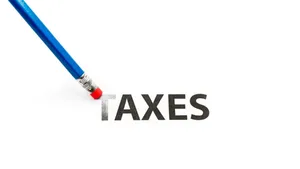The Alternative Minimum Tax (AMT) is a separate tax system that runs parallel to the standard U.S. income tax system. Its original purpose was to prevent wealthy taxpayers from using numerous deductions and loopholes to reduce their tax liability to zero.
For most people, the AMT is something they never have to think about. However, the AMT's reach has expanded, and it can sometimes unexpectedly affect middle- and high-income taxpayers who live in high-tax states or have significant incentive stock options.
Here is a simplified breakdown of what the AMT is and how you know if you are subject to it.
How the AMT System Works
Think of the AMT as a "tax audit" that runs automatically when you file your return.
1. The Two Parallel Calculations
Every taxpayer potentially subject to the AMT must calculate their tax bill two ways:
- The Regular Tax: Calculated using the standard rules, deductions, and tax brackets (Form 1040).
- The AMT Calculation: Calculated using a separate set of rules that disallows certain common deductions (like state and local income tax, or the deduction for incentive stock options). This results in a higher figure called Alternative Minimum Taxable Income (AMTI).
2. The Final Tax Bill
The IRS demands that you pay whichever amount is higher—the Regular Tax or the Tentative Minimum Tax (the AMT calculation).
- Result: If your Tentative Minimum Tax exceeds your Regular Tax liability, you must pay the difference as the AMT.
Who Usually Pays the AMT?
The AMT primarily impacts taxpayers who meet two conditions: High Income and Large Disallowed Deductions.
1. High-Income Earners
The AMT is often triggered when a taxpayer's income reaches the point where their allowable deductions are phased out or limited under the regular tax system, but they still have a large amount of preference items (items disallowed by the AMT).
2. Taxpayers with "Preference Items"
The AMT takes away deductions that are permitted under the regular tax system.The most common "preference items" that trigger the AMT are:
- State and Local Taxes (SALT): This is a major trigger. Under the regular system, you can itemize and deduct up to $10,000 in state and local taxes. The AMT generally disallows this deduction entirely, raising your AMTI significantly if you live in a high-tax state (e.g., California, New York).
- Incentive Stock Options (ISOs): When you exercise ISOs, the difference between the stock's market price and the price you paid is not taxable under the regular system until you sell the stock. The AMT treats this "bargain element" as income immediately, which can push you into paying the AMT.
- Large Deductions: Deductions for certain investment-related interest or depreciation on certain assets may also be disallowed, contributing to a higher AMTI.
The Exemption and Phase-Out
To prevent the AMT from hitting lower-income taxpayers, the law provides an AMT Exemption.
The Exemption Amount (Varies Annually)
This is a fixed dollar amount of income that is shielded from the AMT. This exemption is substantial (e.g., nearly $140,000 for married couples filing jointly in 2024), protecting most middle-class households.
The Phase-Out Rule
The exemption is not available to everyone. It begins to phase out (reduce to zero) once a taxpayer's income (AMTI) hits a certain level. For very high-income taxpayers, the exemption disappears entirely, making them much more likely to pay the AMT.
Conclusion: When to Seek Advice
For a beginner, the easiest rule of thumb is this: if you don't have significant income from incentive stock options and don't itemize large amounts of state and local taxes, you are unlikely to pay the AMT.
However, if your tax return involves large amounts of disallowed deductions or incentive stock options, the complexity makes professional advice essential. Tax software like TurboTax will automatically check for the AMT, but always review the final calculation to understand if the AMT is impacting your tax bill.






